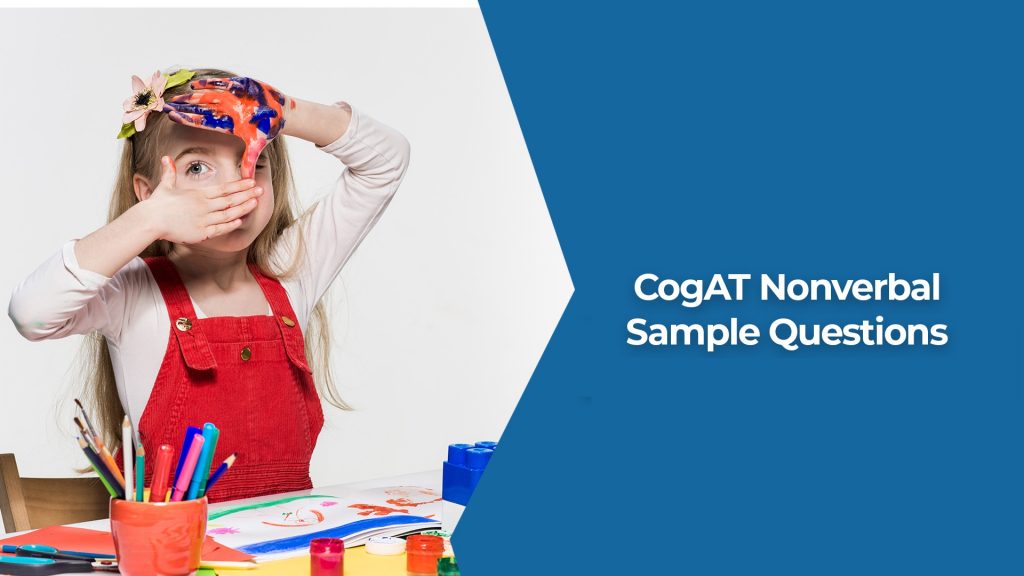Is it difficult to get into the gifted education program? The questions in CogAT are tailored to the section and academic level of the student. However, you shouldn't worry since if your youngster uses the Gifted CogAT test prep consistently, he/she can succeed on this exam with ease. CogAT consists of three batteries – non verbal, verbal, and quantitative. In this blog post, we'll discuss the CogAT nonverbal battery.
The gifted nonverbal battery is used to measure executive functioning abilities like problem-solving, critical thinking, and long-term planning. CogAT nonverbal questions often include a mix of visual and picture-based tasks. Examples include completing patterns, putting things in the correct order, and matching shapes or images.
The three components of the nonverbal battery are figure matrices, paper folding, and figure classification. These three sections make up the CogAT nonverbal score as a whole.
In figure classification, your child must pick the appropriate group of figures that share a certain trait. For instance, he or she might be asked to identify a group of figures that are all quadrilaterals or the image that best captures the similarities.
Another situation can involve being asked to find a gap in the pattern or to solve a visual puzzle. Your child's capacity for innovative thought and problem-solving is evaluated using nonverbal questions.
In the paper folding section, your child is required to predict what will happen to a piece of paper after it has been folded, cut, or hole-punched, and then unfolded. The visual perception abilities of your kid are assessed in this area, along with his/her capacity to identify patterns, recognize similarities and differences, and form mental images. It also evaluates the ability to draw conclusions and make decisions based on the given visual information. Last, but not least, it gauges how logical your youngster is.
The questions in the paper folding section help the child develop attention to detail, pattern identification skills, concentration, and focus. It will also enable him/her to develop the ability for abstract cognition.
Questions from the figure matrices section involve recognition of the missing pieces of a figure matrix and then selecting the missing piece logically from a list of possibilities. This part intends to test your child's ability to understand complicated relationships and engage in abstract thought. The Gifted test prep helps understand the structure of the exam and the types of questions your little one will see on test day.
In general, using the CogAT nonverbal questions can be a great method to figure out if your precious is ready for a gifted education program and to see any potential cognitive weaknesses that need to be addressed.
Here are some CogAT practice questions from non verbal battery
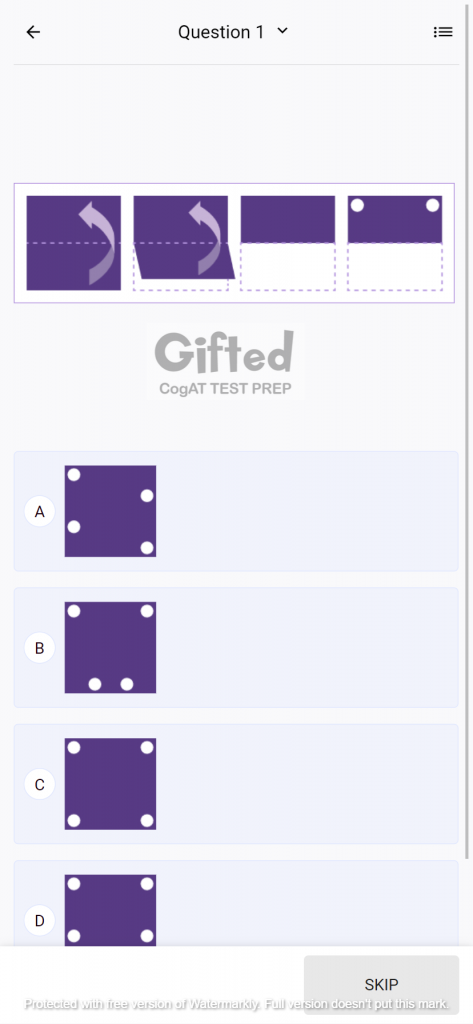
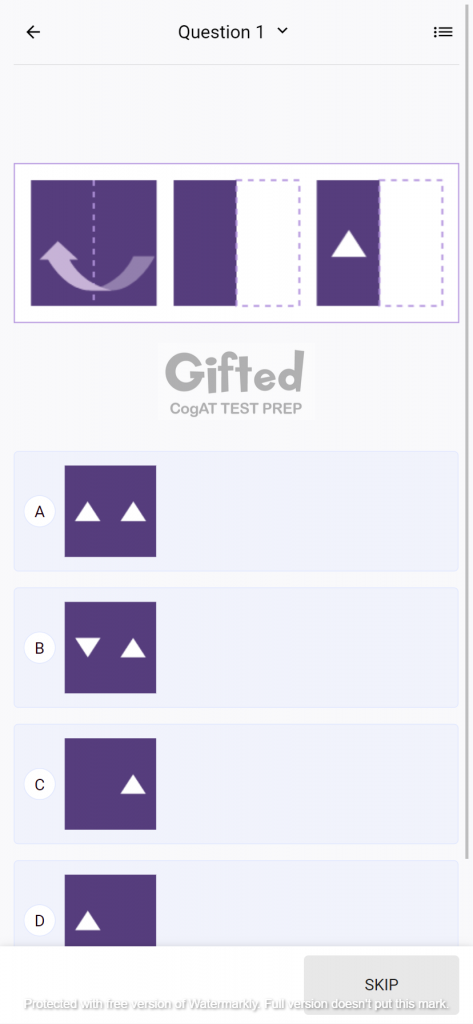
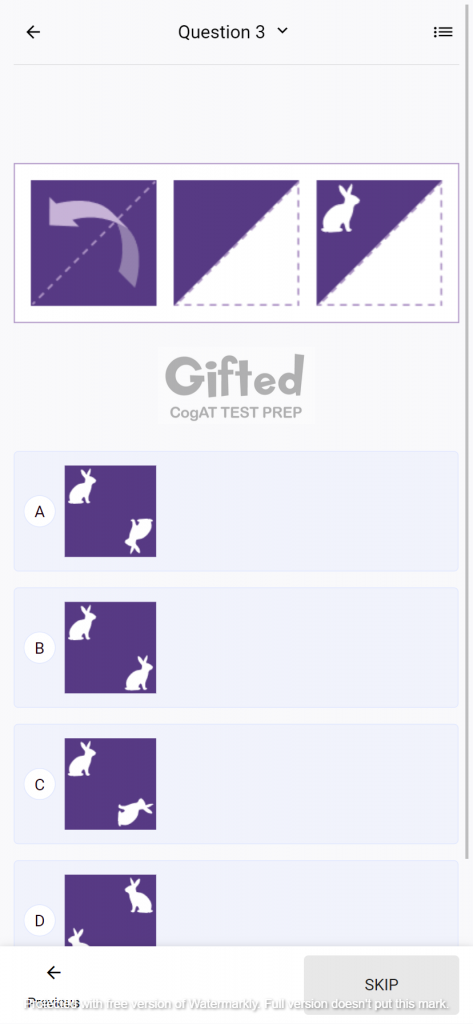
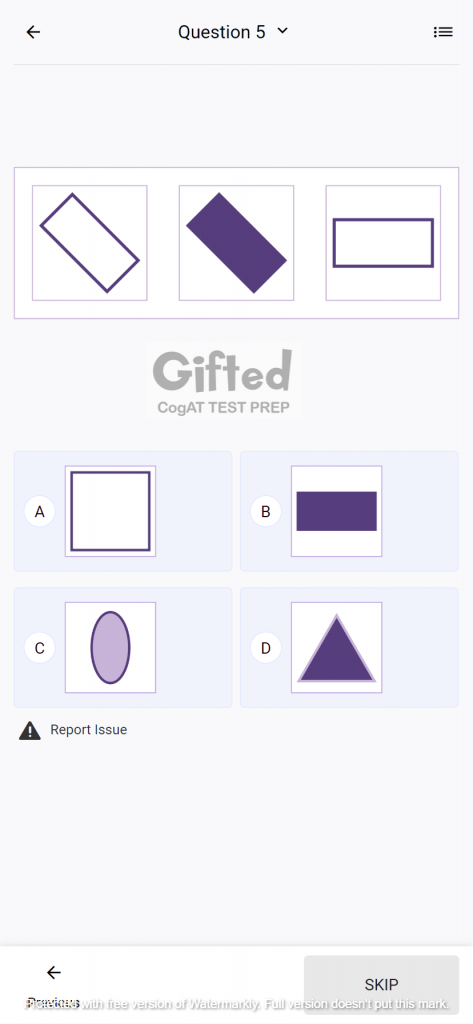
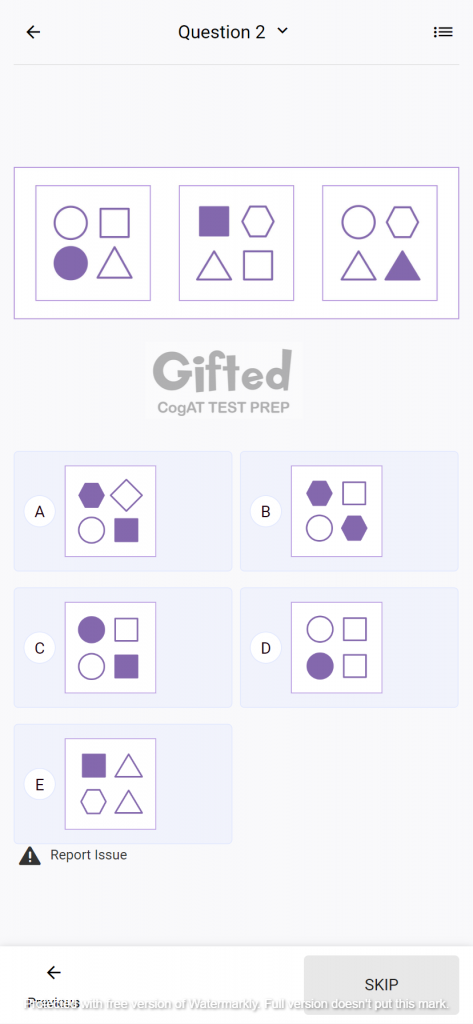

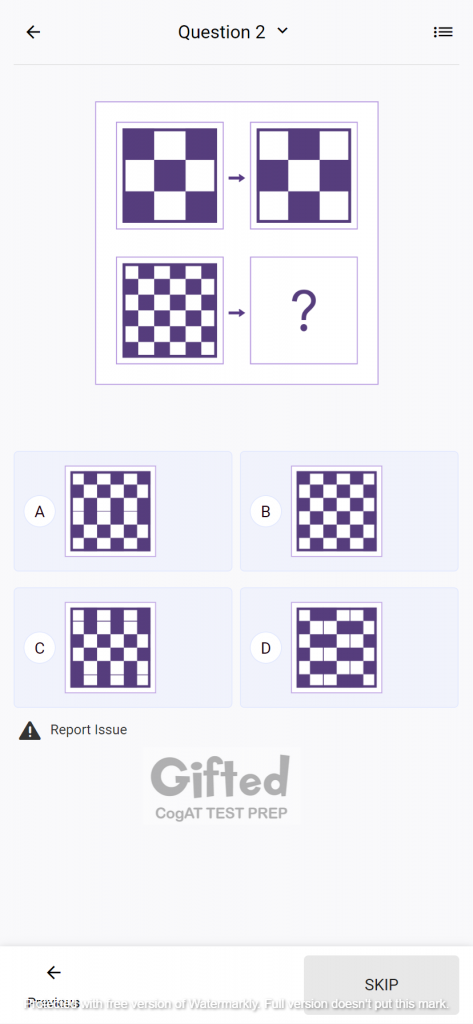
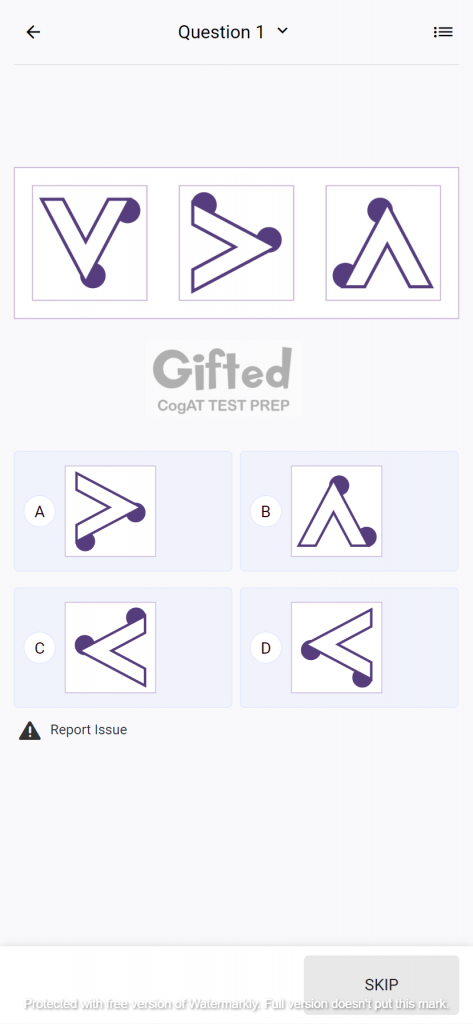
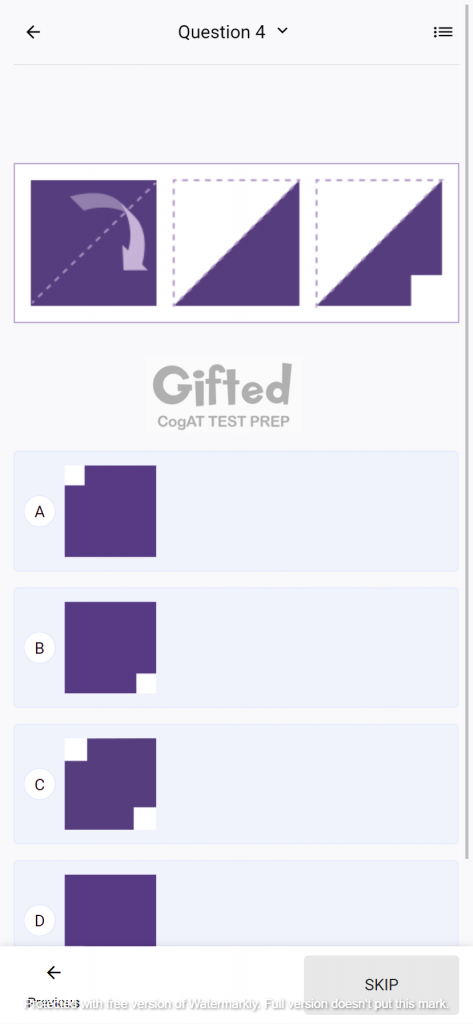
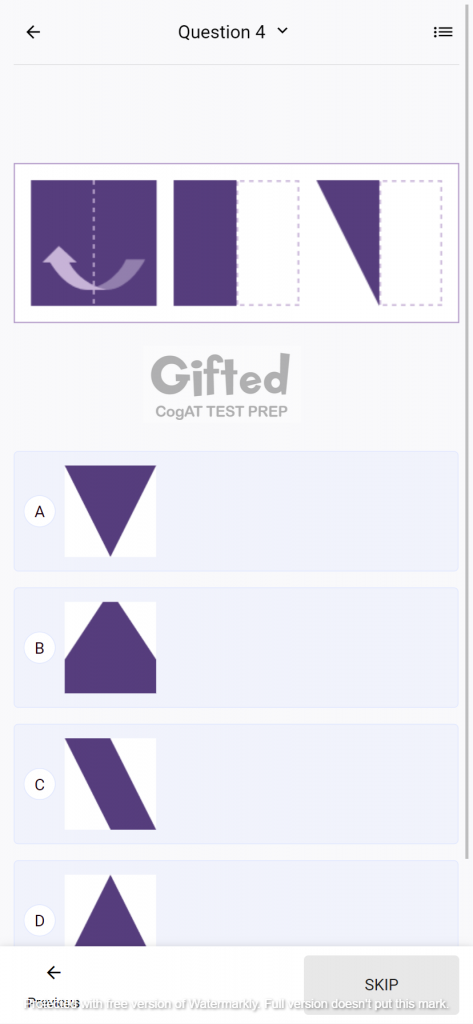

For more detailed explanations, click here
To assist your kid in passing the gifted and talented exam, OLSAT and CCAT exam the Gifted CogAT test prep has compiled 35000+ questions. Follow your child's development and have him/her practice the topics that require more attention. Make it a habit to try questions from all three batteries to determine your child's strengths and weaknesses.
Cognitive Abilities Test™ (CogAT®) is a registered trademark of Riverside Assessments, LLC and its affiliates (“Riverside”). Riverside does not sponsor or endorse any Gifted.achieve.ai products or programs, nor has this gifted.achieve.ai product or program been reviewed, certified, or approved by Riverside. The questions used by gifted.achieve.ai are Gifted.achieve.ai’s own materials, created based on publicly available information, and in no way do they correspond to actual CogAT® testing materials. Gifted.achieve.ai uses practice materials only; not actual test questions. Trademarks referring to Riverside are used for nominative purposes only and such trademarks are solely the property of their respective owner.
